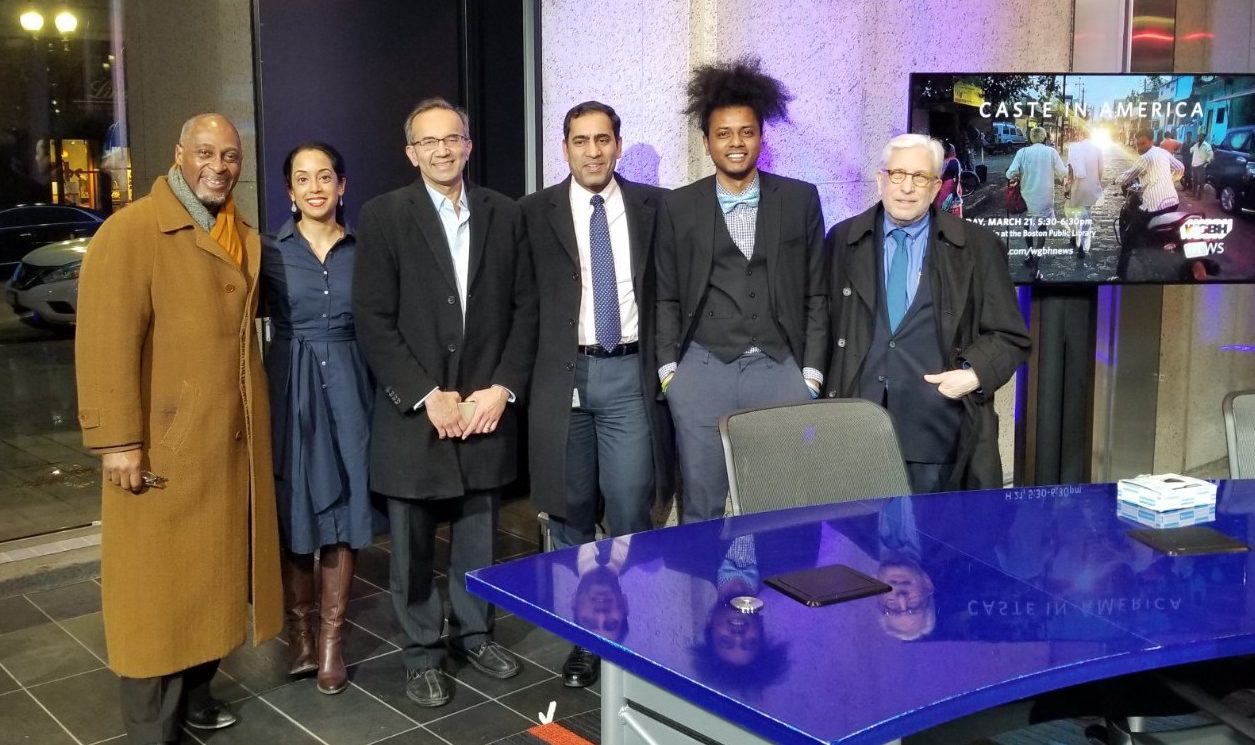
From left to right: Phillip Martin, Kavita Pillay, Tarun Khanna, Swami Venkataraman, Suraj Yengde, Laurence Simon.
Last week, WGBH News Senior Investigative Reporter Phillip Martin led a panel discussion in his series “Caste in America,” speaking with Mittal Institute Director Tarun Khanna, alongside Suraj Yengde, Laurence Simon, Kavita Pillay, and Swami Venkataraman, about the role of caste in the United States at the WGBH Studio in the Boston Public Library. Martin’s series “explores the discrimination Indian immigrants face in the United States as a result of this ancient hierarchical system of human classification,” with this particular segment evolving to encompass a study of caste in general, touching on its impact in other countries and its relationship to race.
“What is caste, you might ask? Simply put …it’s a form of social stratification characterized by religious and socially determined hierarchical status, resulting in social and political privileges for some and exclusion for others. It largely manifested in South Asia — but not exclusively,” said Martin, opening the conversation.
Suraj Yengde, a Postdoctoral Fellow at Harvard’s Shorenstein Center, touched on the characteristics of the caste system. “The Dalits are what we call the former untouchables, the outcasts of the Indian-Hindu order,” he said. “There are four million Indians, or people of Indian origin, who reside in America … Last year, it was recorded close to 200,000 Indian students came to study in America. With the H1B status… India ranks top. At the student intake level, India is second to China.” This large diaspora makes it essential to understand the internalized perception of the caste system that the people within it bring with them when migrating to other nations.
We caught up with Professor Khanna afterwards to hear his main takeaways from the event. “Caste is super costly, even from an instrumental economic point of view,” he said. “Technology is a partial solution to leveling the playing field, but hardly a panacea.”
The panel’s discussion harkens back to the Mittal Institute’s Meritocracy in India and China research program in collaboration with the Fairbank Center for Chinese Studies. Through this program, researchers aim to learn more about the relationship between the idea of merit — its conceptualization, measurement, and implementation — and the organization of talent in China and India.
Professor Khanna touched on this research program during the panel interview with WGBH, explaining its overall goal: “We are juxtaposing the idea of merit as an organizing principle in India, and in China, and by extension, the United States.” Through this project, researchers will better understand how power and influence are allocated in India and China, and perhaps reshape how people in China and India think about talent.
